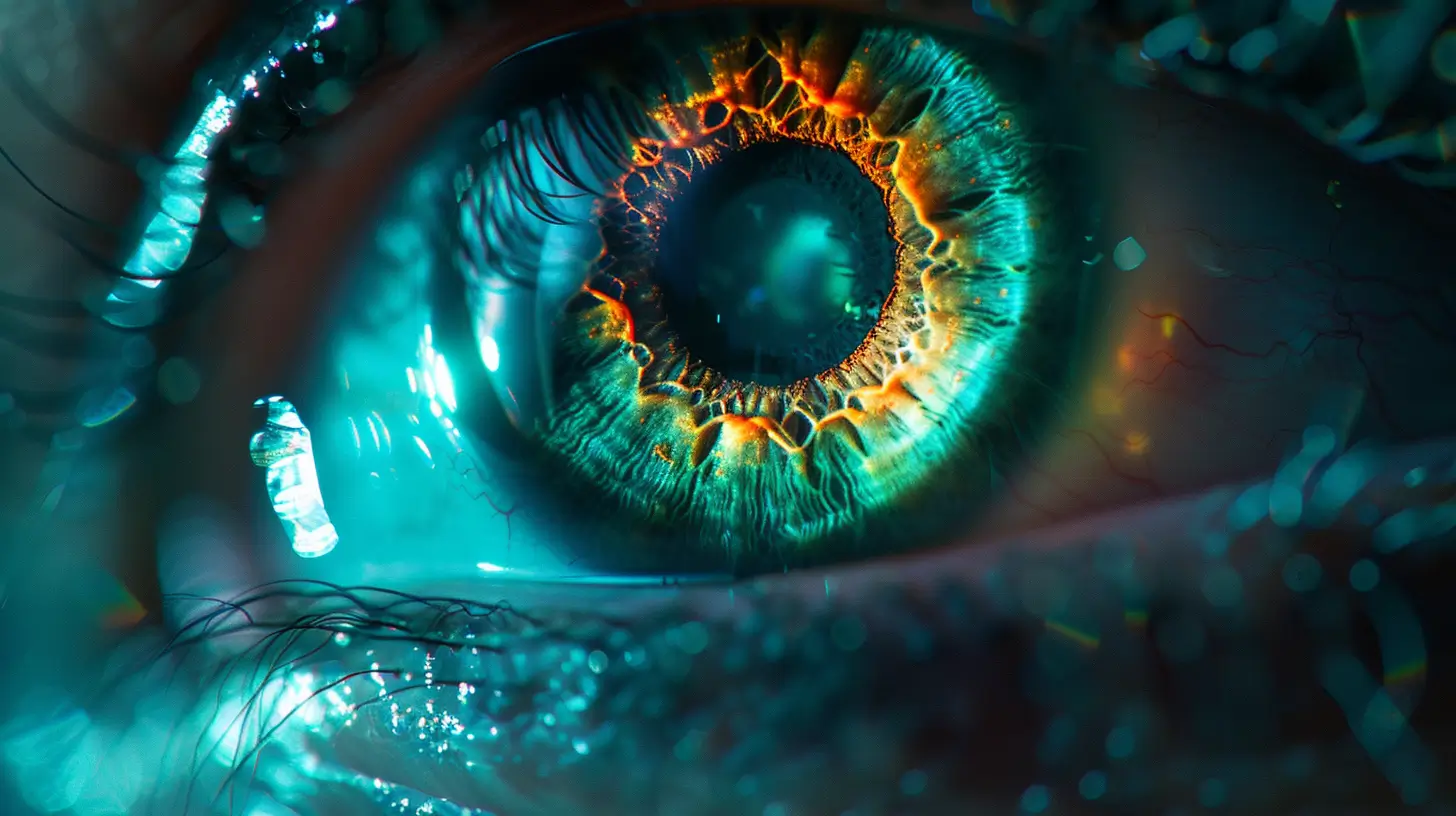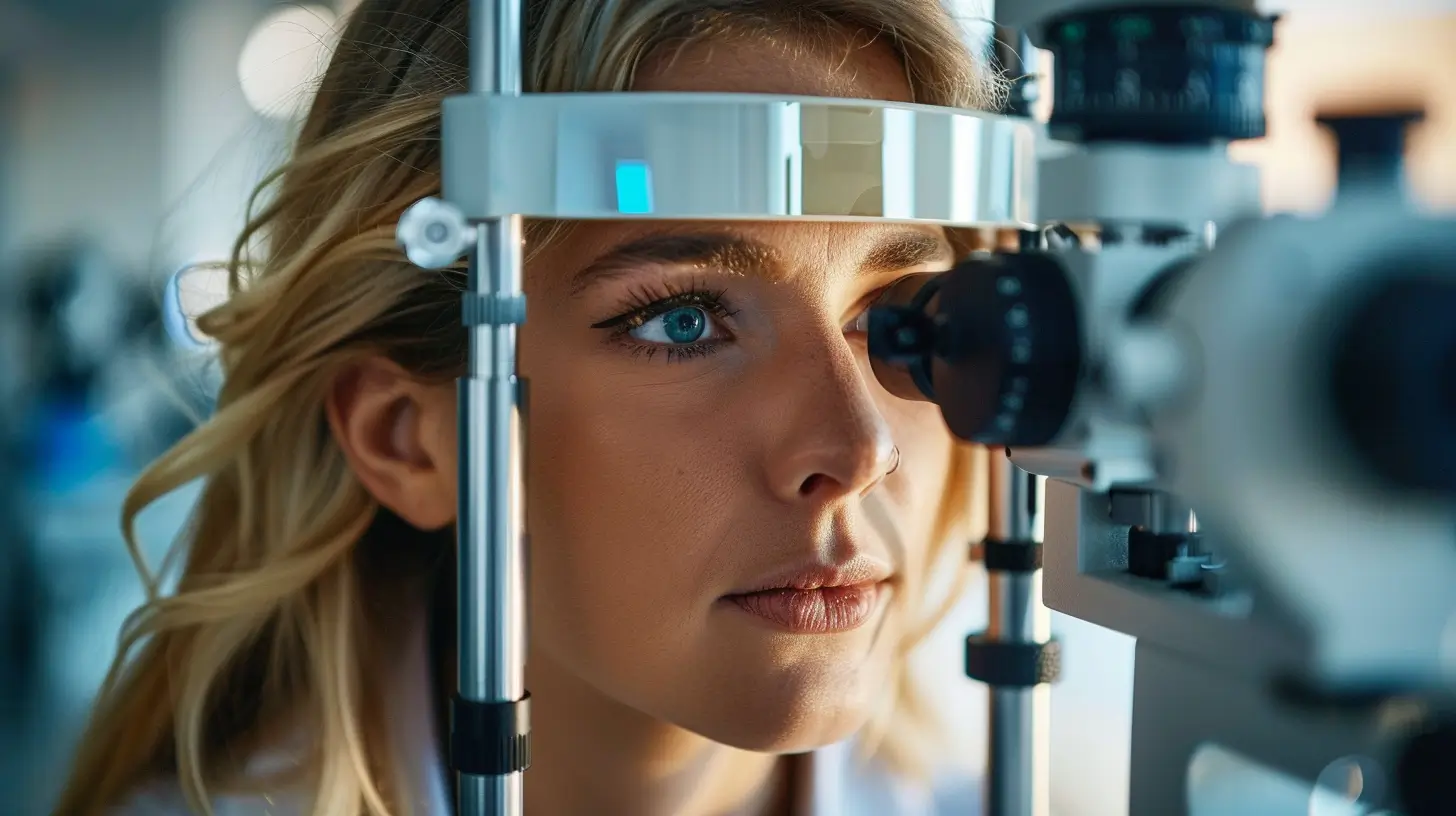Peripheral Vision Loss: Causes, Symptoms, and When to See a Doctor
2024-03-14 | By Orcam Staff

Peripheral vision, also known as side vision, is the ability to see objects and movement outside of your direct line of sight. It allows you to be aware of your surroundings and is crucial for activities such as driving, playing sports, and navigating through crowded areas.
Eye problems can manifest in various ways, including the loss of peripheral vision in one eye. This condition, known as tubular vision, can significantly impact one's vision impairment. Causes of the loss of peripheral vision in one eye can range from eye disorders like glaucoma or retinal detachment to more serious conditions such as strokes or brain tumors. It is crucial to seek medical attention promptly if you experience any sudden changes in your vision to receive the appropriate diagnosis and treatment.
However, many people experience a loss of peripheral vision, which can greatly impact their daily lives. In this article, we will discuss the causes, symptoms, and when to see a doctor for peripheral vision loss.
What Causes Loss of Peripheral Vision?
There are several potential causes of peripheral vision loss, including:
Glaucoma
Glaucoma is a group of eye conditions that damage the optic nerve, which is responsible for transmitting visual information from the eye to the brain. This damage can lead to a loss of peripheral vision, as well as other symptoms such as blurred vision and eye pain.
Retinal Detachment
Retinal detachment occurs when the retina, the thin layer of tissue at the back of the eye, pulls away from its normal position. This can cause a loss of peripheral vision, as well as other symptoms such as flashes of light and floaters in the eye.
Optic Neuritis
Optic neuritis is an inflammation of the optic nerve, which can cause a loss of peripheral vision, as well as other symptoms such as blurred vision and eye pain. It is often associated with conditions such as multiple sclerosis.
Stroke
A stroke occurs when there is a disruption of blood flow to the brain, which can cause damage to the optic nerve and lead to a loss of peripheral vision. Other symptoms of a stroke may include weakness or numbness on one side of the body, difficulty speaking, and confusion.
Brain Tumor
A brain tumor can cause pressure on the optic nerve, leading to a loss of peripheral vision. Other symptoms may include headaches, changes in vision, and difficulty with balance and coordination.
What Are the Symptoms of Peripheral Vision Loss?
The most obvious symptom of peripheral vision loss is a decrease in the ability to see objects and movement on the sides of your vision. However, there may be other symptoms depending on the underlying cause. These may include:
Blurred vision
Eye pain
Headaches
Flashes of light
Floaters in the eye
Numbness or weakness on one side of the body
Difficulty speaking
Confusion
Changes in vision
If you experience any of these symptoms, it is important to see a doctor for a proper diagnosis and treatment.
Eye Disorders and Conditions

One of the most common causes of peripheral vision loss is an eye disorder or condition. These can include glaucoma, cataracts, retinal detachment, and macular degeneration.
Glaucoma is a group of eye conditions that damage the optic nerve, which is responsible for transmitting visual information from the eye to the brain. As the optic nerve becomes damaged, it can lead to a loss of peripheral vision.
Cataracts are a clouding of the eye's lens, which can cause blurry vision and a loss of peripheral vision. Retinal detachment occurs when the retina, the layer of tissue at the back of the eye, pulls away from its normal position. This can cause a sudden loss of peripheral vision.
Macular degeneration is a condition that affects the macula, the part of the retina responsible for central vision. While it primarily affects central vision, it can also cause a loss of peripheral vision in some cases.
Eye Injuries
Injuries to the eye can also cause a loss of peripheral vision. This can include blunt force trauma, penetrating injuries, and chemical burns. These injuries can damage the optic nerve or other structures in the eye, leading to a loss of peripheral vision.
Neurological Conditions
Some neurological conditions can also cause a loss of peripheral vision. These can include strokes, brain tumors, and multiple sclerosis. These conditions can affect the visual pathways in the brain, leading to a loss of peripheral vision.
Medications
Certain medications, such as those used to treat glaucoma, can cause a loss of peripheral vision as a side effect. If you are experiencing peripheral vision loss and are taking medication, it is important to speak with your doctor about potential side effects.
Aging
As we age, our eyes undergo natural changes that can lead to a loss of peripheral vision. This can include changes to the optic nerve, retina, and other structures in the eye. It is important to have regular eye exams as you age to catch any potential issues early on.
Symptoms of Peripheral Vision Loss
The most obvious symptom of peripheral vision loss is a decrease in your ability to see objects and movement outside of your direct line of sight. However, there are other symptoms that may accompany peripheral vision loss, including:
Blurry or distorted vision
Difficulty seeing in low light
Difficulty navigating through crowded areas
Difficulty driving
Headaches
Eye pain
Blind spots in your vision
If you are experiencing any of these symptoms, it is important to speak with your doctor to determine the cause and receive proper treatment.
When to See a Doctor

If you are experiencing a loss of peripheral vision, it is important to see a doctor as soon as possible. While it may be a natural part of aging, it can also be a sign of a more serious underlying condition.
You should also see a doctor if you experience any sudden changes in your vision, such as a sudden loss of peripheral vision. This could be a sign of a medical emergency, such as a retinal detachment or stroke.
Additionally, if you have a family history of eye disorders or conditions, it is important to have regular eye exams to catch any potential issues early on.
Diagnosis and Treatment
To diagnose peripheral vision loss, your doctor will perform a comprehensive eye exam, which may include:
Visual acuity test: This measures how well you can see at various distances.
Visual field test: This measures your peripheral vision and can detect any blind spots.
Tonometry: This measures the pressure inside your eye and can help diagnose glaucoma.
Dilated eye exam: This allows your doctor to examine the back of your eye, including the retina and optic nerve.
Once a diagnosis is made, treatment will depend on the underlying cause of your peripheral vision loss. This may include medication, surgery, or other treatments.
How Is Peripheral Vision Loss Diagnosed?
To diagnose peripheral vision loss, your doctor will perform a comprehensive eye exam, which may include:
Visual acuity test: This test measures how well you can see at various distances.
Visual field test: This test measures your peripheral vision by having you look at a screen and indicate when you see a light.
Tonometry: This test measures the pressure inside your eye and can help diagnose conditions such as glaucoma.
Dilated eye exam: Your doctor will use eye drops to dilate your pupils and examine the back of your eye for any abnormalities.
In some cases, your doctor may also order imaging tests such as a CT scan or MRI to get a better look at the structures inside your eye and brain.
Treatment Options for Peripheral Vision Loss
The treatment for peripheral vision loss will depend on the underlying cause. In some cases, such as glaucoma, medication or surgery may be necessary to manage the condition and prevent further vision loss.
If the cause of peripheral vision loss is a brain tumor, your doctor may recommend surgery to remove the tumor. In cases of optic neuritis, treatment may include steroids to reduce inflammation and protect the optic nerve.
In some cases, peripheral vision loss may be permanent. In these cases, your doctor may recommend low vision aids or other strategies to help you adapt to your vision changes and maintain your independence.
Preventing Peripheral Vision Loss
While some causes of peripheral vision loss cannot be prevented, there are steps you can take to protect your vision and reduce your risk of developing certain eye disorders and conditions. These include:
Have regular eye exams: Regular eye exams can help catch any potential issues early on and allow for prompt treatment.
Wear protective eyewear: If you participate in activities that could potentially cause eye injuries, such as sports or construction work, be sure to wear protective eyewear.
Manage chronic conditions: Certain chronic conditions, such as diabetes and high blood pressure, can increase your risk of developing eye disorders and conditions. Be sure to manage these conditions with the help of your doctor.
Eat a healthy diet: A diet rich in fruits, vegetables, and omega-3 fatty acids can help protect your eyes and reduce your risk of developing certain eye disorders and conditions.
Quit smoking: Smoking can increase your risk of developing eye disorders and conditions, so it is important to quit smoking to protect your vision.
Coping with Peripheral Vision Loss
If you are experiencing a loss of peripheral vision, there are ways to cope and adapt to your condition. This may include using assistive technology, such as magnifiers or screen readers, to help you navigate through daily tasks.
You may also benefit from making changes to your home or work environment to make it easier to navigate. This can include using brighter lighting, removing clutter, and using contrasting colors to help you see better.
Additionally, it is important to seek support from friends, family, and healthcare professionals to help you adjust to your condition and find ways to continue living a fulfilling life.
Tubular Vision Causes
One of the most common vision issues that many people experience is known as tubular vision. This condition occurs when a person's field of vision is narrowed, making it difficult to see objects on the periphery. Instead of being able to see a wide range of surroundings, individuals with tubular vision may only be able to focus on objects directly in front of them. This can impact a person's depth perception and ability to navigate their environment effectively.
It is important for individuals experiencing tubular vision to seek treatment from an eye care professional to improve their quality of life. By addressing this condition early on, individuals can better manage their vision and prevent potential accidents or injuries that may result from limited sight.
Causes of Tubular Vision
Eye diseases such as glaucoma or retinitis pigmentosa
Neurological conditions like optic nerve damage or stroke
Side effects of certain medications
Vitamin A deficiency
Brain tumors impacting the visual pathways
Retinal detachment
Macular degeneration
Damage to the cornea or lens of the eye
Long-term exposure to bright light or UV radiation
Psychological factors like stress or anxiety
In Conclusion
Peripheral vision loss can greatly impact your daily life, but with early detection and proper treatment, it can be managed. If you are experiencing a loss of peripheral vision, be sure to see a doctor as soon as possible to determine the cause and receive appropriate treatment. By taking care of your eyes and seeking help when needed, you can protect your vision and continue living a fulfilling life.
In conclusion, maintaining good eye health is crucial in preventing peripheral vision loss and other eye disorders. By having regular eye exams, wearing protective eyewear, managing chronic conditions, eating a healthy diet, and quitting smoking, you can reduce your risk of developing issues that may lead to peripheral vision loss. If you do experience any symptoms of peripheral vision loss, it is essential to seek medical attention promptly for proper diagnosis and treatment. Remember, early detection and intervention are key to preserving your vision and overall quality of life.
More Stories

Veterans Associations and How They Can Help You - OrCam
2024-06-24 | By OrCam Staff

Top AI Assistive Technologies Enhancing Accessibility | OrCam
Explore how AI-driven assistive technologies are revolutionizing accessibility for individuals with disabilities.
2024-05-29 | By OrCam Staff

AI in Education: Enhancing Accessibility for All Students | OrCam
AI is changing the face of education by enhancing accessibility. Explore practical applications and success stories in educational technology.
2024-05-28 | By OrCam Staff

Revolutionizing Accessibility: How AI & IoT Enhance Assistive Technology
Explore the impact of AI and IoT on assistive tech, transforming accessibility and empowering lives with smart innovations.
2024-05-28 | By OrCam Staff

Transforming Lives: AI & IoT in Assistive Tech | Personal Stories
Read inspiring personal stories about the transformative power of AI and IoT in assistive technology.
2024-05-28 | By OrCam Staff

Unlock Reading Freedom: Tech for the Visually Impaired
Explore the latest in assistive technology designed to empower visually impaired individuals with independence and confidence.
2024-05-23 | By OrCam Staff



